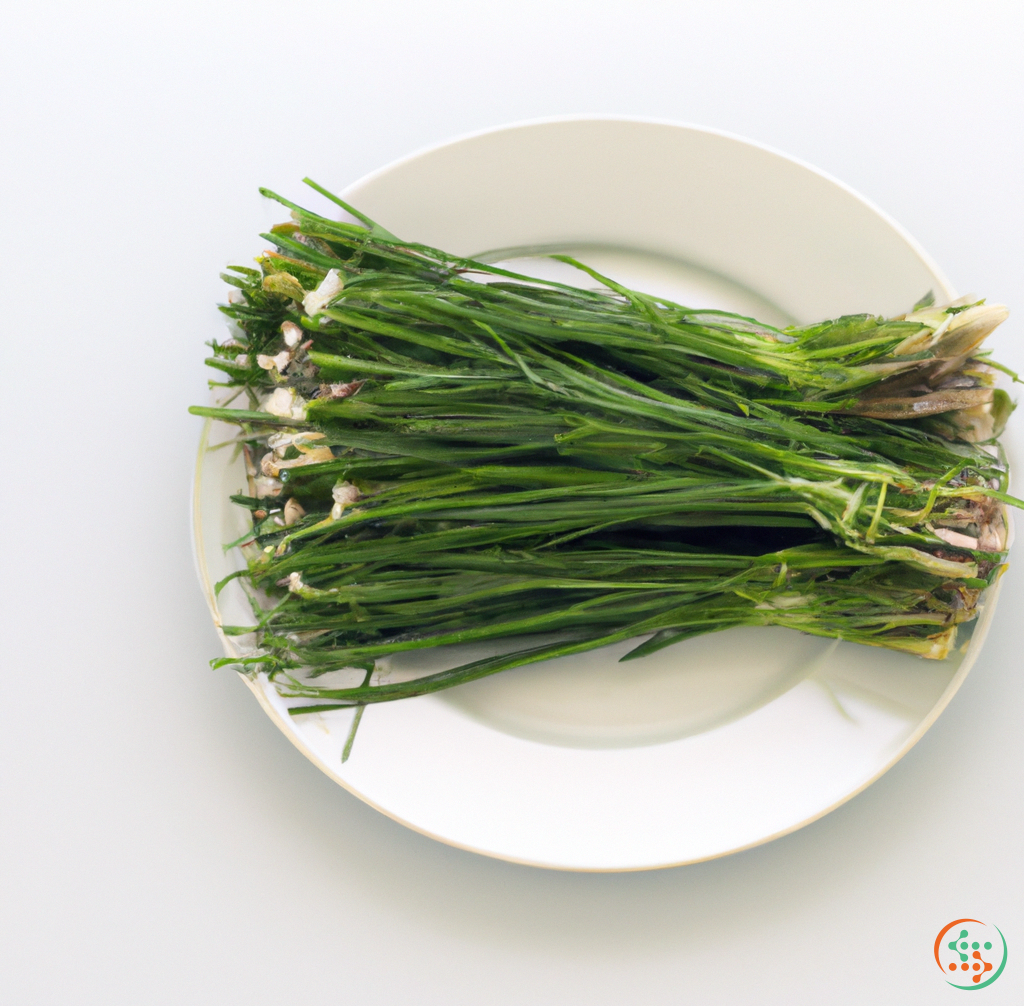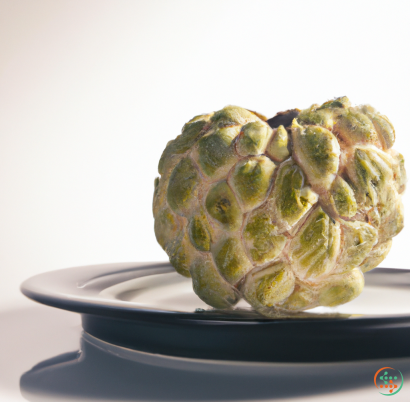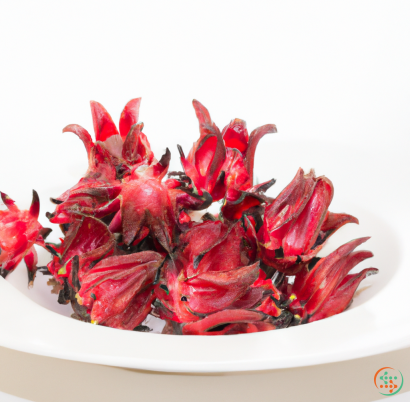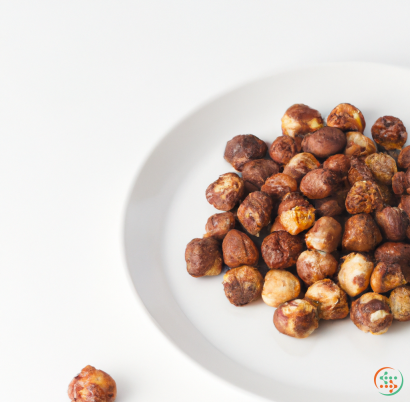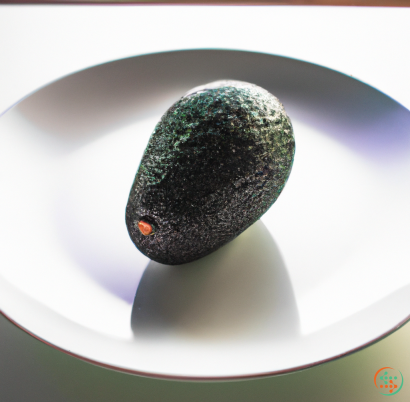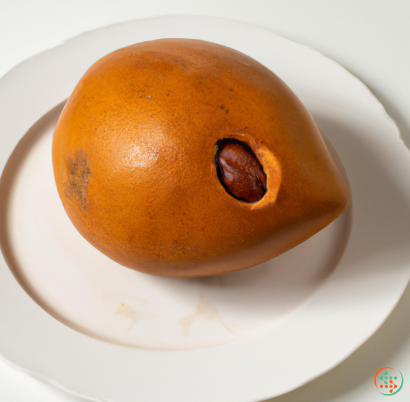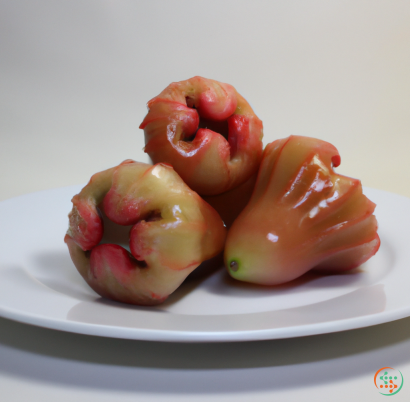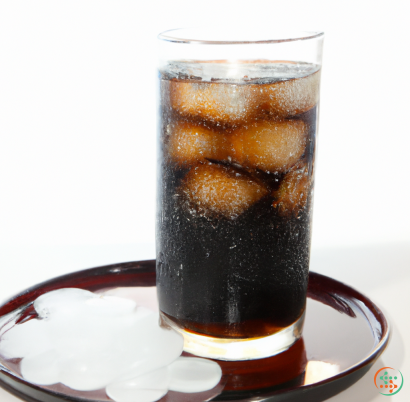Chives
Chives are one of the most versatile herbs in the kitchen. Not only are they robust in flavor, but they are also available year-round and can be used in a variety of dishes. But what exactly is a chive, and how should you use it in your cooking? Let's dive into chives and all the ways you can use them in your favorite dishes.
A chive is a small, hollow, hollow-leafed herb from the family Alliaceae, which also includes its close relative onions. Chives are famous for their mild onion flavor. Unlike onions, chives are far less pungent, with a more subtle flavor that is slightly sweet and similar to grass. Chives come in a variety of sizes, but the most common ones grow between four and six inches in length. They are easily identifiable by their hollow cylindrical stems, linear leaves, and purple-tinged spherical to star-shaped flowers.
When it comes to preparing and cooking with chives, tradition dictates that the flowers are left on throughout the entire process. This is because the delicate edible flowers contribute a mild, oniony flavor without added spiciness of many other herbs. In addition to their flavor, the stalks can also be used for a variety of culinary purposes.
When it comes to baking, chives are a fantastic addition to breads, muffins, and biscuits. They can also add extra flavor to sauces and can be sprinkled on top of salads or roasted vegetables. Chives can also be sautéed and added to omelets, quiches, or frittatas, as well as served with mashed or roasted potatoes. In terms of seasonings, chives are a great addition to salads and can also be used in vinaigrettes, dressings, and marinades.
In addition to the leaves and flowers, you can use the stems as garlic scapes or substitute them in place of green onion or garlic when making a dish like pesto or chimichurri. For the best flavor, use chives when they are fresh and not wilted, as wilted chives have a more intense flavor. When harvested in season, chives will have a flavorful tenderness.
Before adding fresh chives to a dish, chop them finely using a sharp chef’s knife for a fair blend of the mild oniony flavor. To intensify the flavors further, fry or sauté chives to bring out an more intense oniony flavor. This can especially be beneficial for dishes such as fish, poultry, and eggs.
To store chives, refrigerate them in an airtight container in temperatures around 40°F and they should last up to two weeks. In order to give your chives an even longer shelf life, wrap them in a slightly damp paper towel and place them in a zipper lock bag in the refrigerator. You can also freeze chives, although this will lessen the flavor and texture. To freeze chives, wash them and blot them dry before wrapping in a plastic bag and sealing tightly.
Whether you're looking to add depth to a dish or mild onion flavor to a salad, chives are a great way to achieve that goal. With their bold flavor and subtle texture, chives can elevate simple dishes and make complex recipes a flavorful success. From muffins to sauces, salads to dressings, and potatoes to pestos, chives belong in your kitchen.
Chives, an edible herb in the family of onion, garlic, and leek, is prized for its flavor and delicate texture. Not only are chives flavorful, they are also very high in nutrients, making them a great addition to any well-balanced diet. But few people know the complex journey a simple chive takes before it arrives on your dinner plate in all its flavorful glory. Here is an in-depth look at the process of how chives are created and travel from farm to table.
Growing
Chives are a cool-weather plant that requires 12 to 14 hours of sunlight a day. Seeds and divisions of established plants are typically sown in early spring, directly into soil or in a pot or container. Chives prefer well-drained soil with a pH range of 6 to 7.5, though they can tolerate slightly acidic soils.
Finished chive plants are usually about two feet tall and have bright green, hollow blades. The flower heads, which can contain up to 50 individual flowers, are usually purple but can be white or pink. Harvesting is usually done before the flowers bloom, since older plants become woody and their blades may even turn yellow. The leaves and flowers can be harvested multiple times during the growing season.
Harvesting
Once the chive plants are mature, they are ready for harvesting. This is typically done by hand and may require some pruning of the stems and leaves. The harvested chive plants are then placed in a basket and carried back to a packing house.
At the packing house, the chives are inspected and sorted based on size and quality. The leaves are then trimmed to a length of between four and six inches, with the lower stems usually cut off. The resulting chives are placed in eight or ten-ounce vacuum-sealed bags and weighed. The bags are then labeled with the weight and date of harvest, and the lot number is recorded.
Packaging and Shipping
Once the chive plants are weighed and packed, they are ready to be shipped. The chive bags are placed on pallets and loaded onto trucks to be sent off to processing centers. The temperature in the truck must be maintained between 33 and 38 Fahrenheit. At the processing center, the bags are then X-ray scanned to check for any contaminants such as stones or dirt.
The packages of chive plants then continue their journey to their final destination. Most chives are sent to supermarkets, restaurants, and other food sellers. During shipment, the chive bags are placed on trays and placed inside container boxes, which are then shipped via air or land.
Preparing for a Meal
Once the chive plants arrive at their final destination, they are usually kept refrigerated between 33 and 38 Fahrenheit. The leaves are usually stored loose in the original bag or cellophane wrapper for a maximum of three days. For longer-term storage, the leaves can be blanched, shaved, pureed or diced and frozen or kept in an air-tight container.
To prepare the chives for a meal, the leaves should first be washed thoroughly and cut into small, thin slices. The freshness of the chives can be tested by checking the leaves for crispness. They should not be limp or dark green, as they have lost their flavor and texture.
The sliced chives can then be used in a variety of dishes, including salads, omelets, baked potatoes, soups, and sauces. The flavor of the chives will be most bold when added towards the end of the cooking process, as overcooking the leaves can lead to a loss of flavor.
Ensuring Freshness
From farm to table, many steps have to be taken to ensure that chives arrive at the dinner plate in peak freshness and flavor. The temperature must be carefully monitored and regulated during the harvesting, packaging, shipping, and meal-preparing processes for optimal quality. Refrigerating or freezing chives during storage can also help to preserve the flavor and texture of the leaves for several days or weeks.
In conclusion, chives are a flavorful and nutrient-rich herb that requires careful attention and management to ensure that they arrive at the dinner table fresh and flavorful. The harvesting, packaging, and shipping processes are critical steps in ensuring peak quality of the chives, while carefully monitoring the temperature and properly storing the leaves is the best way to preserve their flavor and texture. By following these steps, you can enjoy these flavorful and nutrient-packed herbs in all their glory.
| Vitamin A | 0.218 mg | |
| Beta-Carotene | 0.002612 grams | |
| Vitamin E | 0.21 mg | |
| Vitamin K | 0.2127 mg | |
| Vitamin C | 0.0581 grams | |
| Vitamin B1 | 0.08 mg | |
| Vitamin B2 | 0.12 mg | |
| Vitamin B3 | 0.65 mg | |
| Vitamin B4 | 0.0052 grams | |
| Vitamin B5 | 0.32 mg | |
| Vitamin B6 | 0.14 mg | |
| Vitamin B9 | 0.105 mg |
| Calcium | 0.092 grams |
Daily Value 1.3 g
|
| Iron | 0.0016 grams |
Daily Value 0.018 g
|
| Magnesium | 0.042 grams |
Daily Value 0.4 g
|
| Phosphorus | 0.058 grams |
Daily Value 1.25 g
|
| Potassium | 0.296 grams |
Daily Value 4.7 g
|
| Sodium | 0.003 grams |
Daily Value 2.3 g
|
| Zinc | 0.56 mg |
Daily Value 0.011 g
|
| Copper | 0.16 mg |
Daily Value 0.9 mg
|
| Manganese | 0.37 mg |
Daily Value 0.0023 g
|
| Selenium | 0.9 ug |
Daily Value 0.055 mg
|
| Tryptophan | 0.037 grams | |
| Threonine | 0.128 grams | |
| Isoleucine | 0.139 grams | |
| Leucine | 0.195 grams | |
| Lysine | 0.163 grams | |
| Methionine | 0.036 grams | |
| Phenylalanine | 0.105 grams | |
| Tyrosine | 0.095 grams | |
| Valine | 0.145 grams | |
| Arginine | 0.237 grams | |
| Histidine | 0.057 grams | |
| Alanine | 0.148 grams | |
| Aspartic Acid | 0.303 grams | |
| Glutamic Acid | 0.677 grams | |
| Glycine | 0.162 grams | |
| Proline | 0.216 grams | |
| Serine | 0.148 grams |
| Total Sugars | 0.131141 grams |
per 100g
|
| Myristic acid (14:0) | 0.03 grams |
|
| Palmitic acid (16:0) | 0.1 grams |
|
| Stearic acid (18:0) | 0.01 grams |
|
| Total Saturated fatty acids: | 0.14 g | |
| Oleic acid (18:1) | 0.1 grams |
|
| Total Monounsaturated fatty acids: | 0.1 g | |
| Linolenic acid (18:3) | 0.02 grams |
|
| Linoleic acid (18:2) | 0.25 grams |
|
| Total Polyunsaturated fatty acids: | 0.27 g | |
| Phytosterols | 0.01 grams |
|
| Total Sterols: | 0.01 g | |
